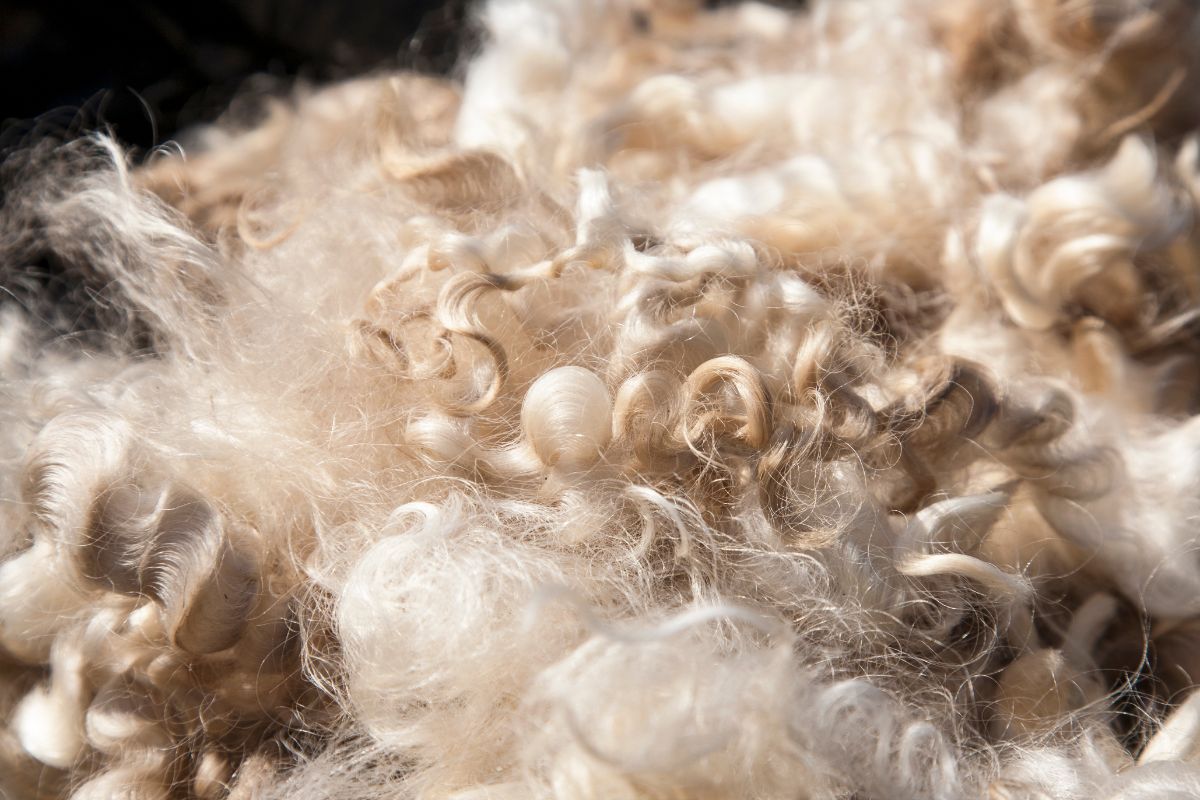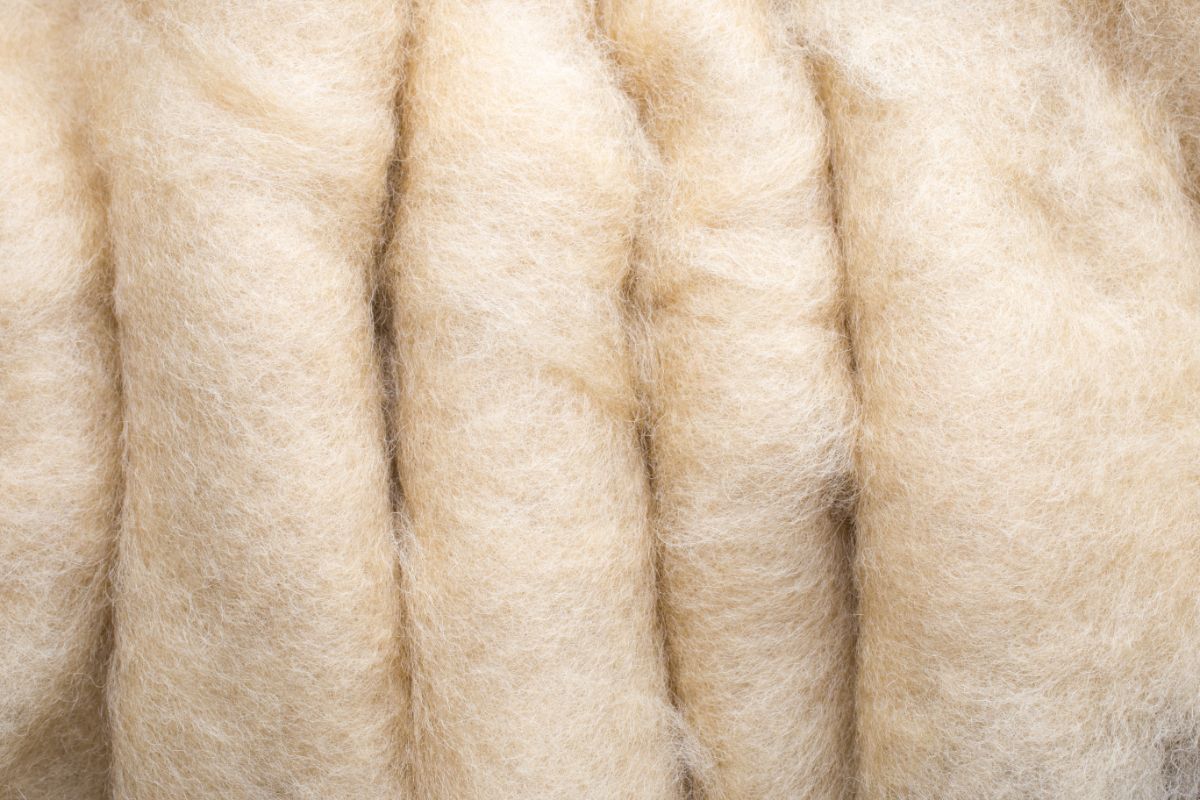Wool is a luxurious and versatile material used in clothing, bedding, carpets, and more. While it often carries a hefty price tag, there are good reasons why wool is so expensive.
From the careful harvesting process to its unique qualities, this article will explore why wool is such an expensive fabric and why it’s worth the cost (Also check out Tips On How To Make Wool Less Itchy).

Top Reasons Why Wool Is So Expensive Today
Wool has been a valuable commodity for centuries, used to make everything from clothing to covers and insulation.
Today, wool is still highly sought after, but it’s become increasingly expensive over the years. Why? In short, it all comes down to availability.
Sheep Produce A Limited Amount Of Their Wool
Wool is not always easy to come by – its production depends heavily on many different factors like the region of the world where it comes from, as well as the quantity that’s needed, and even the season.
If availability is sparse, prices will naturally go up, since everyone involved in producing and selling wool needs to make money.
And when demand outstrips supply or production processes are disrupted (for example due to poor weather conditions), these costs get passed on down – making wool even more expensive for consumers.
The Process Is Costly
The process to create yarn from wool is a labor-intensive and costly endeavor.
- Shearing the wool is the first step of the process and entails cutting it into manageable pieces using mechanized or manual shears.
- After that, the wool needs to be graded and sorted by quality, texture, and other characteristics.
This is usually done manually by experienced workers and can take a long period of time.
- Once graded and sorted, the wool then goes through a cleaning process to remove dirt and debris before being carded and combed in order to align fibers into parallel orientations.
- This prepares it for spinning into yarns, which requires machines as well as skilled laborers.
In addition to labor costs, mills must also invest in purchasing various chemicals for scouring or degreasing the wool during the production process – all of which come with their own set of associated costs.
Altogether, these stages together add up to a considerable amount of money that must be invested in order for manufacturers to produce high-quality yarns from start to finish.
It Takes Time To Process
The process of taking wool from a sheep to its finished form is a time-intensive one. It begins with shearing, which is typically done once a year in the spring.
Professional shearers can quickly and efficiently remove the wool from the sheep in this one annual session; however, the fleece must be handled carefully to keep it all together.
After that, grading and sorting take days, followed by cleaning and scouring procedures that can take up even more time.
This process involves chemically washing the wool to remove dirt, oils, and other contaminants, as well as drying it out to prepare it for further use.
Altogether, the amount of time taken between the start of the shearing process to when you have an end product in your hands can vary greatly depending on how much wool you have gathered and how inefficient your processes are.
Wool Isn’t Always Readily Available
The art of being a farmer is quickly becoming a dying tradition. In decades past, people used to rely on small-scale farming and shearing to make an income and even support entire families.
But with the advances in technology, so many traditional farming practices have become obsolete. Many farmers now have to spend more time and money than ever before in order to keep up with the latest advancements.
This can be quite overwhelming for some, especially those who aren’t technologically inclined or do not wish to adapt.
Professional shearers are still active in many places around the world and are able to shear an entire sheep by hand.
Supply And Demand
Supply and demand are essential elements of economics, and they represent the fundamental concept that a specific product or service’s price is determined by how much of it is available and how much people want it.
In other words, a lower supply while still maintaining an adequate level of demand will lead to high prices; conversely, when there’s too much available or if interest in something begins to wane, then prices can drop accordingly.
When there’s less of something than what is needed or wanted and people are willing to pay for it regardless of cost, those with access will benefit from higher demands regarding their market worth on the item.
Those who want it but don’t have the resources will not be able to partake in the transaction, which just further demonstrates how powerful this economic element can be in deciding who gets what, despite being subjectively prioritized.

Much More Durable Than Other Fabric
Wool is an ideal choice for clothes and accessories that need to withstand a lot of wear. This natural fiber is renowned for its impressive durability, due to its unique springy and resilient properties.
- Wool fibers can bend up to 20,000 times without breaking, making it especially suitable for performance socks that are put through their paces regularly (Also check out Best Compression Socks For Plus Size Women).
- In fact, wool can stand up to regular or even harsh daily use but still look good – an important benefit when wearing jumpers.
- Besides its toughness, another quality of wool that makes it such a sought-after material is its remarkable ability to hold its shape and form despite everyday wear and tear.
This means items made from wool don’t end up sagging or aging quickly if they’re looked after well.
So whether the item is something you wear all the time like a coat or pants, something you sport occasionally, or even something you use around the house like carpets or blankets, wool has proven itself as an incredibly durable option time and time again.
Different Wool Types Are Pricey
It is true that many of us assume wool comes from sheep, but that is only partially the case. While some wool does come from sheep, there are actually several other sources of wool.
Wool from this family can be gathered from goats, alpacas, and llamas.
The type of wool being used to make garments plays a large role in how much it will cost. Each source of wool has different qualities that lend it to certain applications more readily than others.
Cashmere and Angora, for instance, are both exceptionally high-quality wool derived from goats and rabbits respectively – both of which usually carry a hefty price tag with them due to their superior softness and luxury.
In contrast, Merino and Lambswool offer great warmth while remaining lightweight despite coming at a lower price point than those mentioned previously.
Competitiveness
The production of wool cloth predates even the times of Ancient Rome. It’s renowned for being a strong and durable material that can withstand a variety of elements, making it highly sought after.
As such, there is no need to convince consumers that it’s worth the money they pay for it.
Yet while wool may have been the status quo in terms of fabrics, there has been an evolution over the years that means more material choices are available to customers than ever before.
In particular, materials like cotton and synthetic fibers including nylon and polyester have become popular alternatives in recent years; these materials boast good strength as well as resistance to certain substances such as chemicals and oils.
Despite this, wool remains a favorite among many shoppers due to its natural qualities, which provide customers with a choice nobody should overlook.
Is Wool Worth The Price?
The answer to this question really depends on the individual. Wool is a unique material in the sense that it blends strength with luxury, offering consumers a chance to invest in a garment that can withstand regular use and still look good.
Although some may find other materials to be more cost-effective, there’s no denying that wool provides an exceptional level of quality that is hard to match.
Final Thoughts
Wool is an expensive material, but it’s a worthwhile investment if you’re looking for something that can withstand regular use and still look good. Wool provides superior warmth and durability, making it a popular choice for clothing, carpets, and blankets.
Different types of wool are more or less pricey depending on the quality of the material, so it pays to find the best-suited wool for your application.
Frequently Asked Questions
Wool has been used for centuries in various forms including clothing, blankets, and carpets just to name a few.
It is also naturally renewable through shearing the animals, which makes it an attractive option compared to manufactured fabrics, making it highly sought after in the textile industry.
Thus, wool continues to gain traction as a preferred fabric due in part to its versatility and effectiveness.
- What Is A Figure 8 Body Shape? - June 7, 2023
- How To Dress For Your Body Shape When You’re Plus Size - June 7, 2023
- What Not To Wear With Leggings - June 7, 2023
